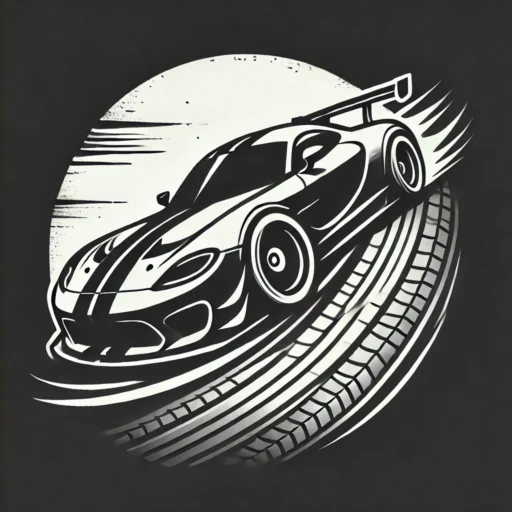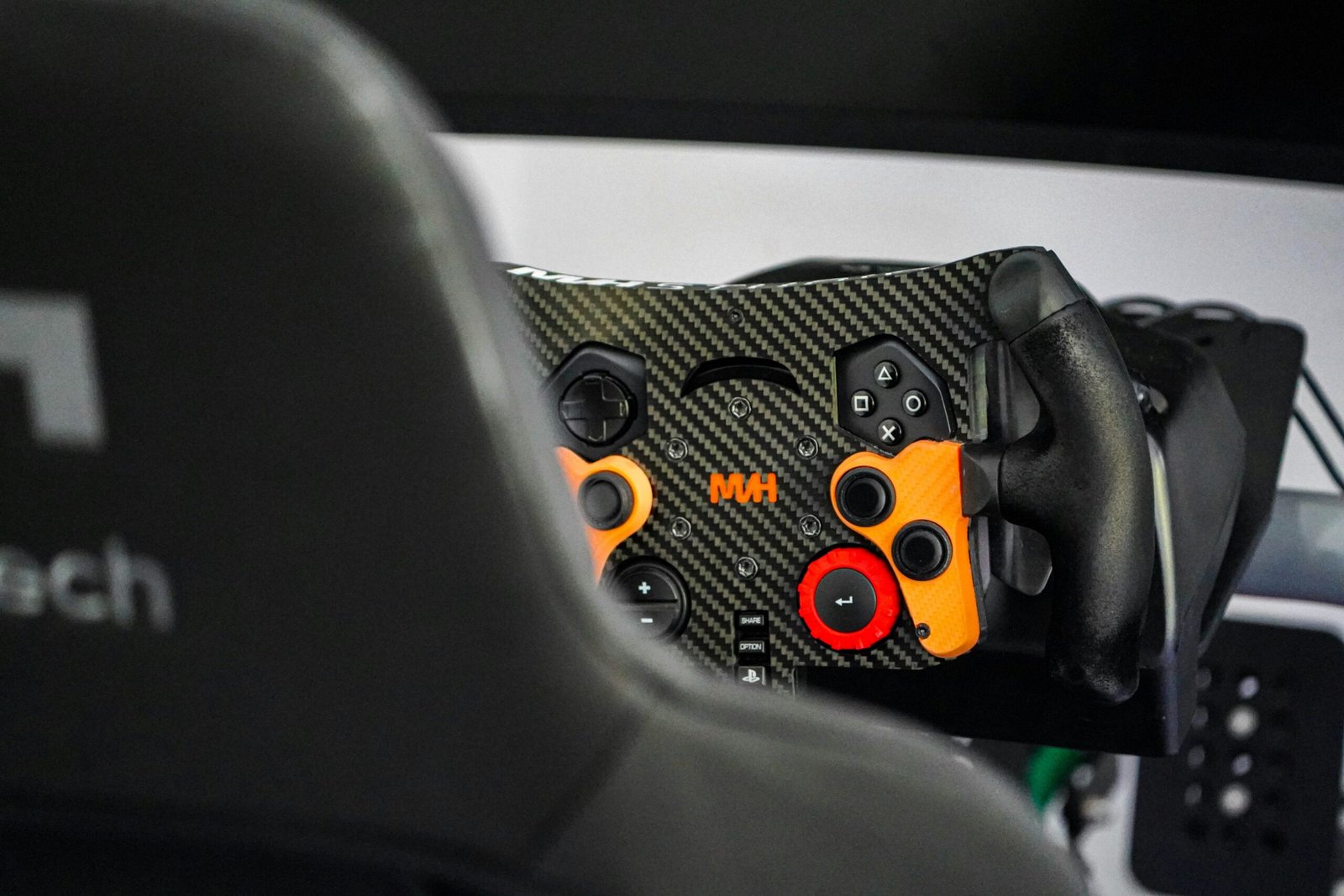Understanding the Role of a Handbrake in Sim Racing
The handbrake, traditionally referred to as a “drift brake,” is a crucial component in the realm of sim racing, serving various purposes that vary from real-world applications to their digital equivalents. In real-world motorsport, a handbrake is primarily used to initiate controlled slides or drifts, allowing drivers to navigate tight corners with enhanced agility. This technique is particularly useful in disciplines such as rally racing, where sharp turns and unpredictable terrain frequently challenge drivers’ skills.
In sim racing, the handbrake mimics these real-life functions, providing players the ability to execute techniques that replicate the behavior of actual vehicles. When integrated into a racing simulation, the handbrake allows for sharper cornering and the ability to manipulate the car’s dynamics effectively. Unlike a standard brake pedal, which generally applies pressure to all four wheels to slow down or stop the vehicle, the handbrake operates independently on the rear wheels, creating a different braking experience. This unique operation is essential for mastering certain racing styles and can greatly influence gameplay.
Furthermore, the ability to employ a handbrake in sim racing enhances the overall racing experience and promotes a greater understanding of vehicle dynamics. Players can explore a range of techniques, such as drifting and corner entry adjustments, making their virtual racing more realistic. By understanding the significance of the handbrake and its distinct function from standard braking systems, sim racers can develop a more nuanced approach to their driving. Mastery over these techniques often translates to improved performance on the virtual track, allowing for a richer and more fulfilling racing experience.
Improving Control and Precision
In sim racing, achieving optimal control and precision during competitive events is paramount. One of the critical tools that enhance these aspects is the handbrake. The ability to initiate quick slides, navigate sharp corners, and execute intricate drifting techniques is significantly improved with the use of a handbrake, making it an essential accessory for serious sim racers.
The handbrake allows drivers to execute smoother and more controlled turns. When approaching a corner, utilizing the handbrake can help manage the weight transfer of the vehicle, ensuring that the car remains stable through the turn. This is particularly beneficial in scenarios where cornering speed must be balanced with trajectory, as it enables racers to maintain more control over their vehicle’s path. By effectively utilizing the handbrake, drivers can better adhere to racing lines, resulting in improved lap times.
Additionally, mastering the handbrake can lead to impressive drifting maneuvers. In racing simulations that focus on drift events, the handbrake becomes a crucial element in initiating and maintaining slides. With its precise operation, a driver can quickly lock the rear wheels, inducing a controlled drift. The ability to manage drifts with finesse not only enhances the overall driving experience but also provides a competitive edge in races that emphasize style and technique.
The integration of a handbrake into sim racing elevates a driver’s capacity for executing complex maneuvers with heightened accuracy. This translates into better lap times and a more competitive performance overall. For competitors seeking to maximize their racing capabilities, investing in a quality handbrake could be one of the most impactful decisions they make. Thus, the importance of this tool in enhancing control and precision cannot be overstated in the dynamic environment of sim racing.
A Competitive Edge: Mastering Drift and Rally Racing
In the realm of sim racing, mastering specific disciplines such as drifting and rally racing can significantly elevate a driver’s performance and enjoyment. A key element in excelling at these formats is the effective use of a handbrake. The handbrake serves as a powerful tool that allows racers to navigate tight corners, initiate drifts, and maintain control over their vehicles during high-speed maneuvers. Without this essential component, the execution of these techniques would be considerably less effective.
In drifting, the handbrake is employed to help initiate a slide, allowing drivers to control the angle and speed of their vehicle while navigating through corners. By pulling the handbrake at the right moment, sim racers can shift the weight distribution of their vehicle, leading to an optimal drift. This technique is crucial, as it aids in maintaining momentum and achieving the desired angle necessary for successful completion of a drift. Practicing this skill in a virtual environment not only enhances a player’s ability but also builds muscle memory, translating directly into better performance in real-world scenarios.
Similarly, rally racing demands quick reactions and control over the vehicle, particularly on varied surfaces such as dirt, gravel, or snow. The handbrake plays a vital role in executing tight turns where traditional braking may not suffice. In sim racing, drivers can simulate these conditions and refine their techniques, using the handbrake to help stabilize their cars during sharp turns. This tactical use of the handbrake can be the difference between finishing a stage in a respectable time or losing valuable seconds on the clock.
Ultimately, for both casual players and competitive drivers alike, integrating the handbrake into their racing strategy is essential for maximizing performance in drift and rally events. Engaging with these techniques in a simulated environment allows drivers to not only improve their skills but also prepare for the challenges that await them in the real world.
Choosing the Right Handbrake for Your Setup
Selecting the perfect handbrake for your sim racing setup is paramount for enhancing your overall experience. Understanding key factors will not only facilitate a better choice but also ensure that it’s a viable addition to your rig. One of the primary aspects to consider is the compatibility of the handbrake with various racing simulators. Different simulators may require specific types of input devices, so it is essential to verify that the handbrake you choose is supported by the games you wish to play.
Another crucial factor is the build quality of the handbrake. A well-constructed handbrake not only provides a better tactile response but also ensures longevity. Materials such as aluminum or high-quality plastic offer durability. When looking at build quality, also consider the mechanics of the handbrake; those with a smooth, precise action are preferable for improved control during races.
Adjustability is another vital characteristic. An adjustable handbrake allows for personal customization, catering to your unique racing style. Features such as reachable height and tension adjustments can significantly enhance your comfort and performance. Furthermore, budget considerations cannot be overlooked. While it may be tempting to opt for the cheapest option, investing in a quality handbrake often yields better returns in terms of performance and enjoyment.
Popular models like the Fanatec ClubSport Handbrake and the Thrustmaster TSS Handbrake Sparco Mod are notable examples that reflect a blend of quality and functionality. For those already set up with a sim rig, integration can be achieved through various mounting options available on the market, ensuring that you can make the most of your new handbrake. By carefully weighing these factors, you will be well-equipped to enhance your sim racing experience.



